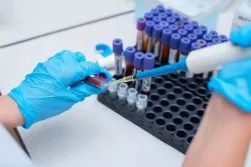A recent multi-institutional study has uncovered troubling trends in opioid prescriptions for young patients undergoing surgery, with 1 in 6 youths filling an opioid prescription prior to their procedure. Even more concerning, 3% of these patients continue to fill opioid prescriptions three to six months after surgery, indicating potential opioid dependence. The study, which includes researchers from Children’s Hospital of Philadelphia (CHOP), Massachusetts General Hospital, University of Pennsylvania Perelman School of Medicine, and Stanford Medicine, highlights the urgent need for better guidelines to prevent unnecessary opioid prescriptions and to identify patients at risk for persistent use. The findings were published in the journal JAMA Network Open.
Each year, approximately 1.4 million youths undergo surgery in the United States. These patients are particularly vulnerable to opioid-related harms. Despite efforts to reduce opioid prescriptions, clinicians must be vigilant about the risk of addiction in adolescent patients, who may be susceptible due to genetic, neurobiological, and social factors. Previously, there was limited knowledge about the risks of persistent opioid use among adolescents and the timing of initial and refill prescriptions.
"While prior analyses have shown a decline in opioid prescriptions in general, following surgical opioid prescribing recommendations remains a critical issue, especially for adolescents who are more inclined to engage in risk-taking behavior," said Dr. Tori N. Sutherland, the study’s first author and an attending anesthesiologist at CHOP. "Our study found that these patients are still filling prescriptions that are either not recommended or are in excess of what they may need. They are also filling prescriptions up to two weeks before surgeries not associated with severe pre-operative pain, putting young patients at risk for developing persistent use throughout their lives as they transition into adulthood."
The study analyzed data from a national insurance database of privately insured patients aged 11 to 20 who underwent 22 different surgical procedures, either common or associated with severe postoperative pain requiring opioids. None of these patients had taken opioids prior to their surgeries.
Out of over 100,000 patients, 46,951 (46.9%) filled an opioid prescription, with 7,587 (16.2%) of these prescriptions filled up to two weeks prior to surgery for procedures unlikely to cause severe preoperative pain. Furthermore, 6,467 (13.8%) patients filled a second opioid prescription, and 1,216 (3.0%) continued to fill prescriptions between 91- and 180-days post-surgery.
One key finding was that severe pain following surgery was not linked to persistent opioid use. Instead, patients with pre-existing chronic pain, who typically underwent procedures associated with mild or moderate pain manageable with non-opioid medications, were more likely to develop persistent opioid use.
"We believe this study underscores the need for establishing a standard of care for patients who undergo these procedures," said Dr. Scott Hadland, the study’s senior author and Chief of Adolescent and Young Adult Medicine at Mass General for Children and Associate Professor of Pediatrics at Harvard Medical School. "Effective pain management is critical and sometimes requires opioids, but clinicians also need to ensure they are not further contributing to the opioid addiction crisis, particularly with young patients."
Source: Children’s Hospital of Philadelphia (CHOP), news release, July 11, 2024



